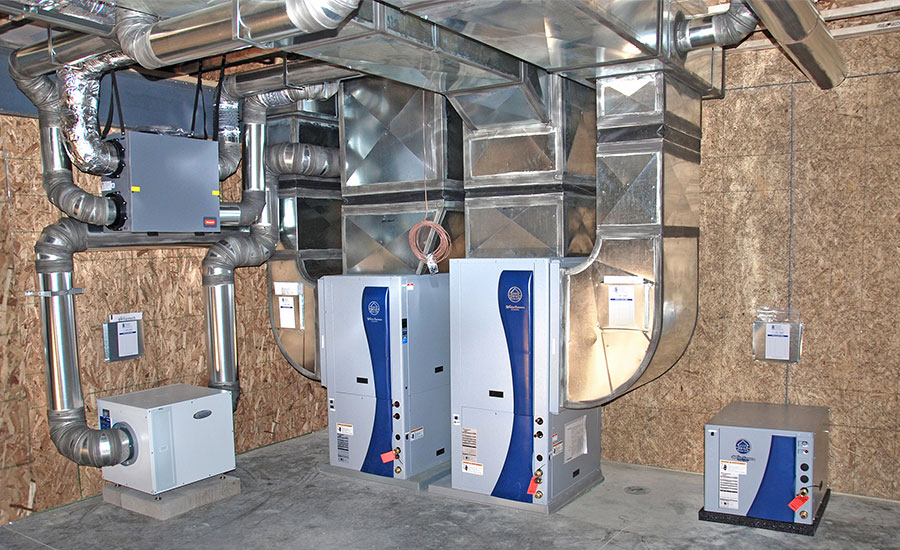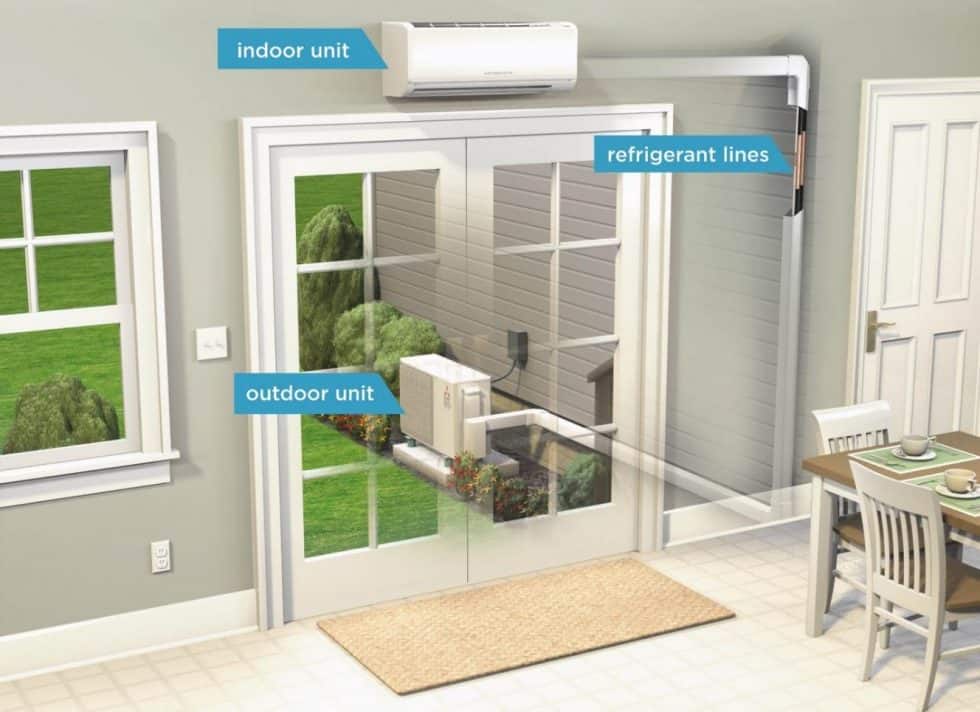Energy Efficiency and Air Conditioning Installation: What You Need to Know
Designing With Convenience in Mind: Integrating Air Conditioning in Design ==========================================================================
When it concerns designing building areas, the old stating 'kind adheres to function' is true. However have you ever before took into consideration how incorporating air conditioning right into style can boost convenience and performance concurrently?
The seamless combination of cooling down systems within the structure of a building not just affects the residents' well-being but additionally affects the general sustainability of the structure. As you discover the complex relationship in between layout and a/c, a globe of cutting-edge solutions and cutting-edge technologies awaits your discovery.
Key Takeaways
- Energy-efficient systems enhance comfort and sustainability.
- Integrated air conditioning enhances interior air high quality.
- Stabilizing visual appeals and capability guarantees ideal design.
- Future trends focus on wise, sustainable cooling options.
Importance of Integrated A/c
When designing areas, integrating a/c is necessary for ensuring the very best comfort and capability. Power efficiency plays a crucial role in the design process, as it not only decreases functional expenses yet likewise decreases the ecological impact of the building. By incorporating energy-efficient cooling systems, you can develop a sustainable and cost-efficient service that profits both the occupants and the earth.
Furthermore, indoor air quality is an additional vital aspect to take into account when designing with integrated cooling. Proper air flow and filtering systems aid preserve a healthy and balanced indoor environment by decreasing contaminants and allergens. This brings about boosted passenger wellness and efficiency. When selecting air conditioning systems, prioritize those that use advanced filtering technologies to improve the general interior air quality.
Variables Affecting Layout Choices
Integrating a/c right into building layouts needs cautious consideration of different aspects that influence layout decisions. When integrating a/c systems, sustainability considerations are vital to minimize the structure's environmental influence. Individual experience plays a substantial function in identifying the efficiency and complete satisfaction with the cooling system.
Power Performance: Lasting style methods aim to reduce power intake, which not just benefits the atmosphere but also minimizes functional prices for the structure owner.
Indoor Air Top Quality: Giving a comfortable and healthy and balanced interior environment improves the general individual experience, promoting productivity and health.
Aesthetics and Assimilation: Integrating air conditioning systems effortlessly into the architectural design makes sure that performance does not jeopardize the aesthetic appeal of the room, boosting user complete satisfaction and overall structure visual appeals.
Effective Cooling Down Approaches for Buildings
To optimize cooling down effectiveness in buildings, think about integrating passive style techniques along with cooling systems. Easy air conditioning techniques can substantially minimize the demand for mechanical air conditioning, bring about more sustainable remedies for keeping comfortable interior temperatures. Design functions such as shading tools, all-natural air flow systems, and thermal mass can assist control temperatures without depending exclusively on energy-intensive air conditioning. By strategically putting windows to optimize cross air flow or making use of reflective roofing materials to reduce solar warmth gain, you can harness the power of nature to cool your structure efficiently.
Along with passive approaches, carrying out sustainable services like eco-friendly roofing systems or living walls can better enhance cooling performance by supplying insulation and decreasing warmth absorption. These functions not just aid in preserving comfortable indoor temperature levels yet likewise add to a greener atmosphere. By incorporating easy air conditioning techniques with lasting services, you can create an extra energy-efficient and eco-friendly structure layout that focuses on both convenience and conservation.
Stabilizing Aesthetic Appeals and Capability
Take into consideration the unified integration of aesthetic components with functional facets in your building style to ensure a well balanced and impactful outcome. When including air conditioning systems right into your structure layout, striking a balance in between aesthetics and performance is key to creating spaces that not just look great yet additionally give optimal comfort for owners.
To attain this balance, keep the following points in mind:
Blend the System with the Environments: See to it that the air conditioning devices or vents seamlessly incorporate with the general visual of the room, whether via concealed positioning, ornamental covers, or matching shades.
Prioritize User Experience: Layout the air flow and temperature level control systems in a way that prioritizes the convenience and wellness of the occupants. Consider aspects such as air distribution, sound levels, and ease of usage to improve the overall customer experience. https://sohohvac.co.uk/air-conditioning-installation.html
Integrate Sustainable Practices: Opt for energy-efficient air conditioning options that not only add to the visual charm of the structure yet likewise advertise sustainability and minimize ecological impact.
Future Patterns in Architectural Cooling
As you imagine the future of building layout, remaining abreast of arising cooling trends ends up being essential for improving both form and feature within your tasks.
The combination of clever technologies into architectural cooling systems is set to reinvent the means buildings are cooled. These systems use information and automation to enhance energy usage, giving personalized convenience while decreasing environmental influence.
Lasting services are additionally shaping the future of architectural cooling. From passive layout methods that make the most of natural ventilation to innovative cooling products that decrease the need for traditional cooling, sustainability goes to the leading edge of cooling down advancements. Designers are significantly including green roofings, shading aspects, and thermal mass into their layouts to produce more energy-efficient cooling systems.

Frequently Asked Inquiries
Exactly How Does Cooling Effect the Overall Sustainability and Power Efficiency of a Building Style?
When you incorporate air conditioning into structure style, it affects sustainability and power performance. Power usage can increase because of cooling use, influencing building performance. This boosted energy demand can have adverse ecological impacts, reducing general sustainability.
To mitigate these impacts, consider integrating energy-efficient a/c systems, correct insulation, and passive cooling strategies. Balancing convenience with energy performance is important for developing lasting building designs. https://sohohvac.co.uk/air-conditioning-repair.html
Exist Any Type Of Laws or Certifications That Architects Need to Think About When Integrating Cooling Into Their Styles?

When incorporating a/c into your styles, it's critical to think about regulative needs like building ordinance and qualification requirements for power effectiveness. Meeting these standards assurances that your task straightens with industry ideal practices and environmental goals.

Familiarizing yourself with these laws will aid you in developing sustainable layouts that focus on convenience while likewise decreasing energy usage. Stay informed and compliant to provide projects that are both comfortable and environmentally friendly.
Can the Positioning of A/c Units Affect the Overall Convenience and Capability of an Area?
When it concerns cooling units, positioning matters a whole lot for your area's convenience and functionality. Air blood circulation is essential, so prevent obstructing vents or putting units in dilemmas.
Think about just how sound pollution can influence your environment and go for a visually pleasing arrangement that mixes effortlessly with your spatial layout.
Take note of where you place these devices to ensure maximum comfort and efficiency throughout your area.
What Are Some Cutting-edge Technologies or Products That Can Be Made Use Of to Improve Air Conditioning Solutions in Modern Style?
To improve cooling systems in modern design, you can discover smart controls and lasting products. Easy air conditioning strategies and making use of thermal mass are innovative means to boost performance and convenience.
How Can Architects Ensure That the Layout of Air Conditioning Systems Matches the General Aesthetic of a Structure While Still Focusing On Performance and Comfort?
To assure the design of air conditioning systems complements a structure's visual, prioritize visual integration and style consistency. Include energy-efficient technologies for capability. Stabilizing aesthetics and capability improves resident comfort.
Highlight seamless integration of cooling components right into the architectural design. By focusing on both visual appeals and power efficiency, designers can develop a space that's aesthetically enticing, comfortable, and environmentally friendly.
Final thought
In general, when designing with convenience in mind, integrating air conditioning in architecture is crucial. By taking into consideration elements such as efficient air conditioning methods, stabilizing appearances and performance, and remaining in advance of future trends, engineers can create rooms that aren't only visually appealing but also comfy for occupants.
It is essential to prioritize the well-being and comfort of those who'll be using the space, and incorporated a/c plays a key function in accomplishing this objective.